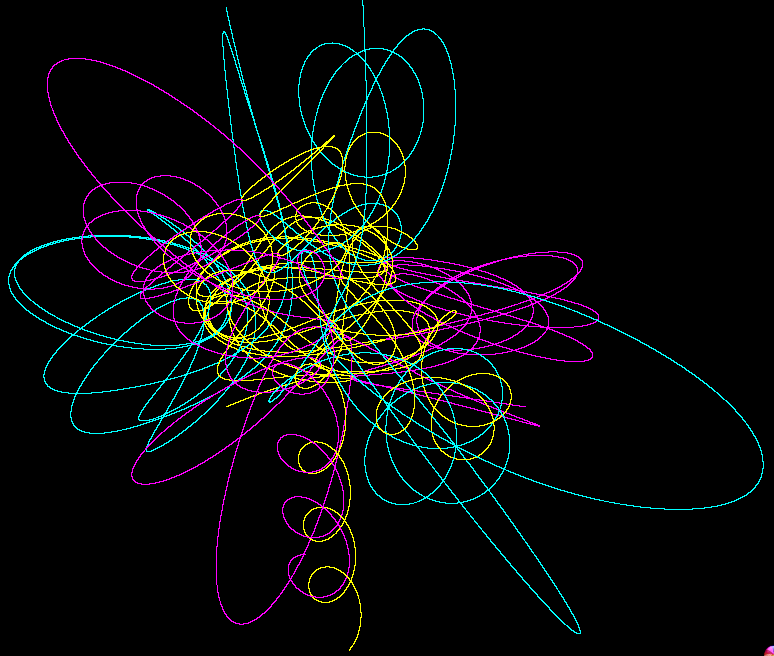
Here is an amusing little three body problem related by Diacu & Holmes “Celestial Encounters” (ISBN = 0691027439). Three point masses begin at rest at the vertices of a right 3-4-5 triangle. Their masses are proportional to the length of the opposite side. Naturally, they remain in the initial plane of the triangle. Here (a68) is a too simple version of code to compute their progress. (See note on C dialect, and Algol68.) It is drastically off by t = 10 for Δt = 10−6. Practically this problem requires both variable Δt and some higher order numerical method. This C code uses a variable Δt and writes a file that this Java program can plot. Here are some fragmentary thoughts on the math. Here are the code and pictures computed with the fourth order Runga-Kutta which makes the best and most accurate pictures.
Below is a picture of the calculation to t=10:

Here are the trails unto expulsion:
 .
.
 And again with r/dx at about 4000.
And again with r/dx at about 4000.
 A lone mass m, at radius r with velocity v has potential energy −m(12-m)2/(12r)
and kinetic energy mv2/2.
A lone mass m, at radius r with velocity v has potential energy −m(12-m)2/(12r)
and kinetic energy mv2/2.